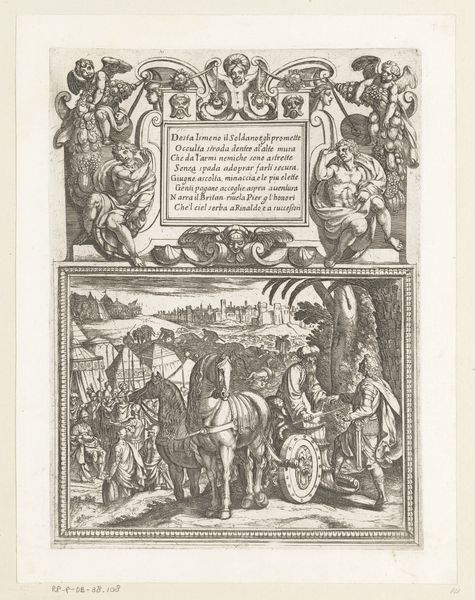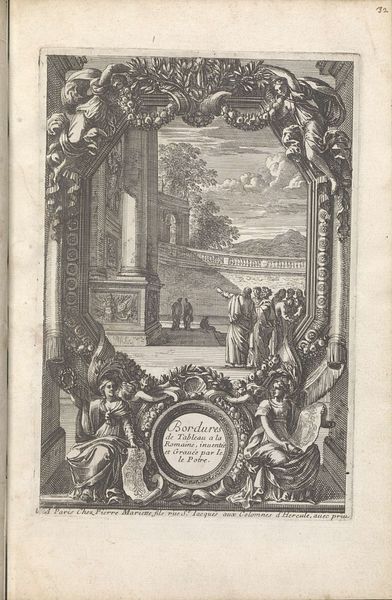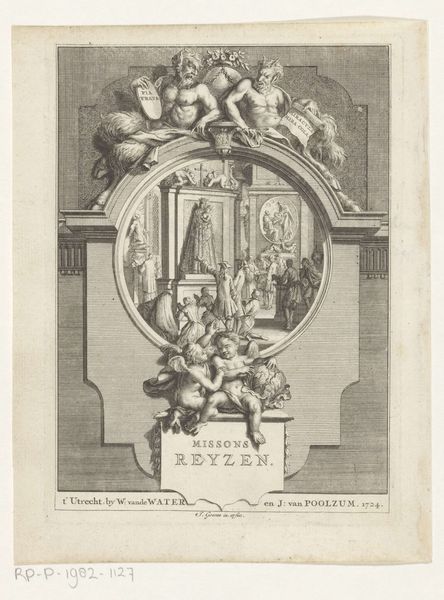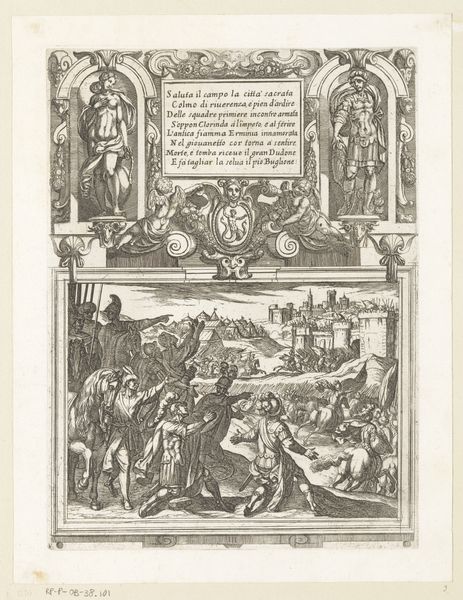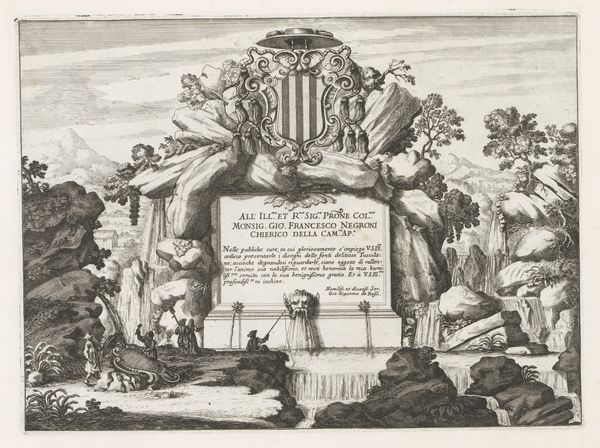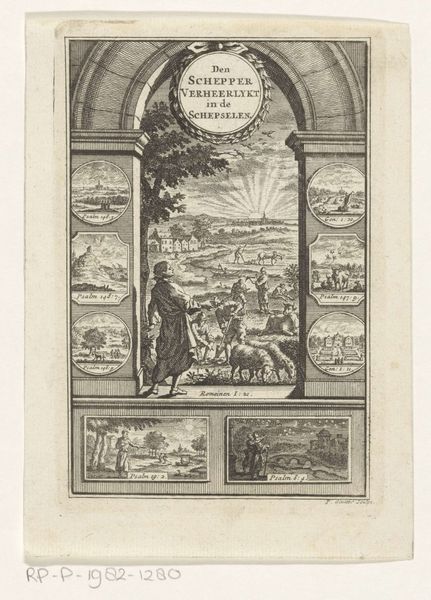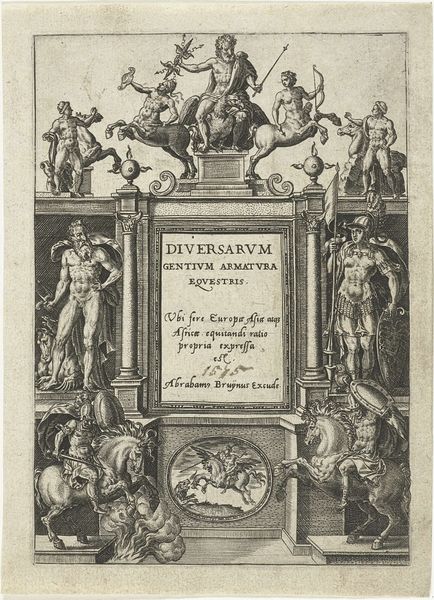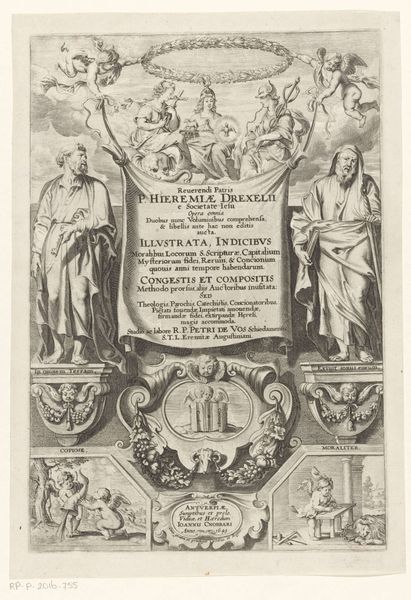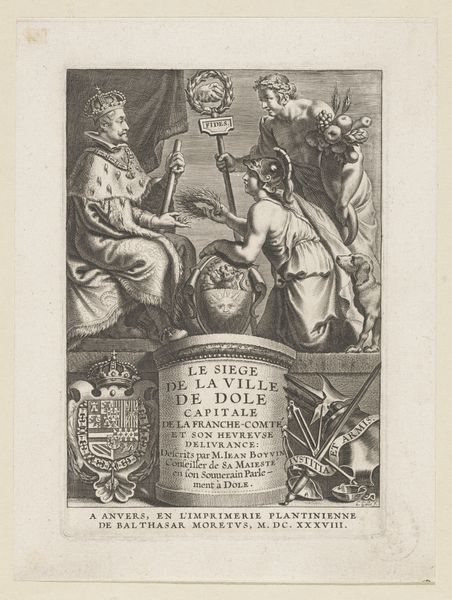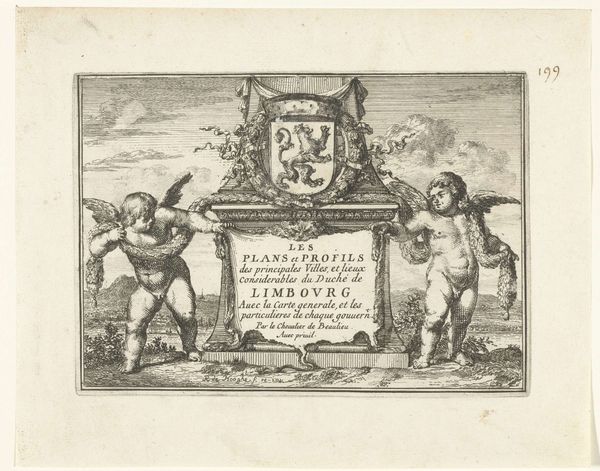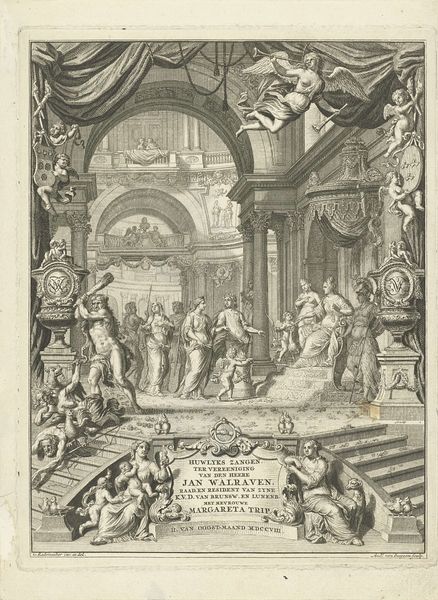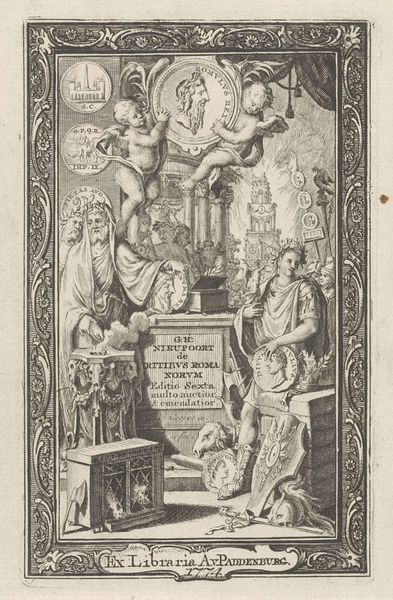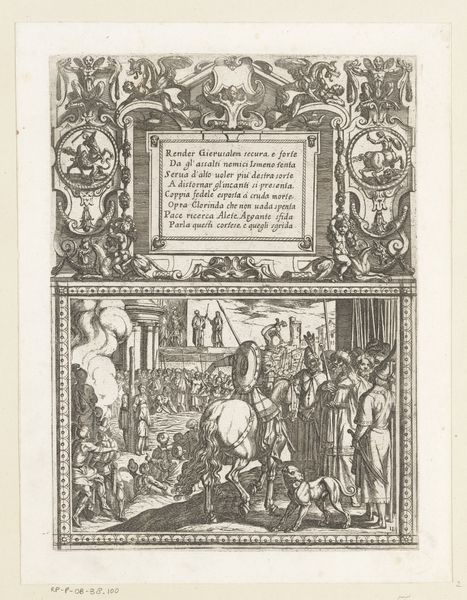
print, engraving
#
allegory
#
baroque
# print
#
old engraving style
#
cityscape
#
history-painting
#
engraving
Dimensions: height 163 mm, width 93 mm
Copyright: Rijks Museum: Open Domain
Curator: We're looking at an engraving entitled "Allegorie op Rome met adelaar en wolvin," or "Allegory of Rome with Eagle and She-wolf," created around 1713. It’s currently held at the Rijksmuseum. Editor: The detail is extraordinary. Even in monochrome, the density of the linework creates a surprisingly powerful, almost monumental, feeling despite its modest size. Curator: Indeed. Its formal structure relies on symmetry and verticality, accentuated by the architectural elements and allegorical figures. The composition is carefully layered, with visual references stacked one upon another, inviting a meticulous decoding of symbols and motifs. Editor: Look at the contrast in texture. The polished stone of the plinth against the feathery wings of the eagles, the rough fur of the she-wolf, and the smooth skin of the figures. The artisan clearly understood how to manipulate the medium of engraving to create an engaging material experience for the viewer. You know, thinking about labor, I am so impressed by how many hours someone had to dedicate for this, to carefully manipulate the material… Curator: Note the central inscription panel, functioning as a literal and symbolic foundation, inscribed with text that hints at the glorification of Rome through learning. Above, you'll find winged allegorical figures and portraits. Editor: The wolf suckling Romulus and Remus at the bottom adds another layer. The depiction grounds the Roman ideal in myth and a specific place, underlining the supposed virtues of the city’s founders in the soil. Curator: Absolutely. It’s an artful blend of historical, mythical, and allegorical elements. The artist weaves a tapestry that speaks to Rome’s enduring power and cultural significance. The various iconographies function cohesively, celebrating Rome as the cradle of Western civilization and reinforcing classical ideals. Editor: Yes. The material conditions, though, would point to a very specific kind of power, too. This engraving would have served a particular function within scholarly and possibly political circles. Each impression pulled was not merely an image, but it contributed to knowledge-making practices. This makes it such a rich object, both visually and socially. Curator: It's fascinating to observe how, across time and material forms, Rome is continually being reshaped and presented. Editor: Absolutely, and by considering process, labor, and the use of symbolic materials, we move beyond the surface aesthetic, finding Rome, and Roman history remade in ink.
Comments
No comments
Be the first to comment and join the conversation on the ultimate creative platform.
